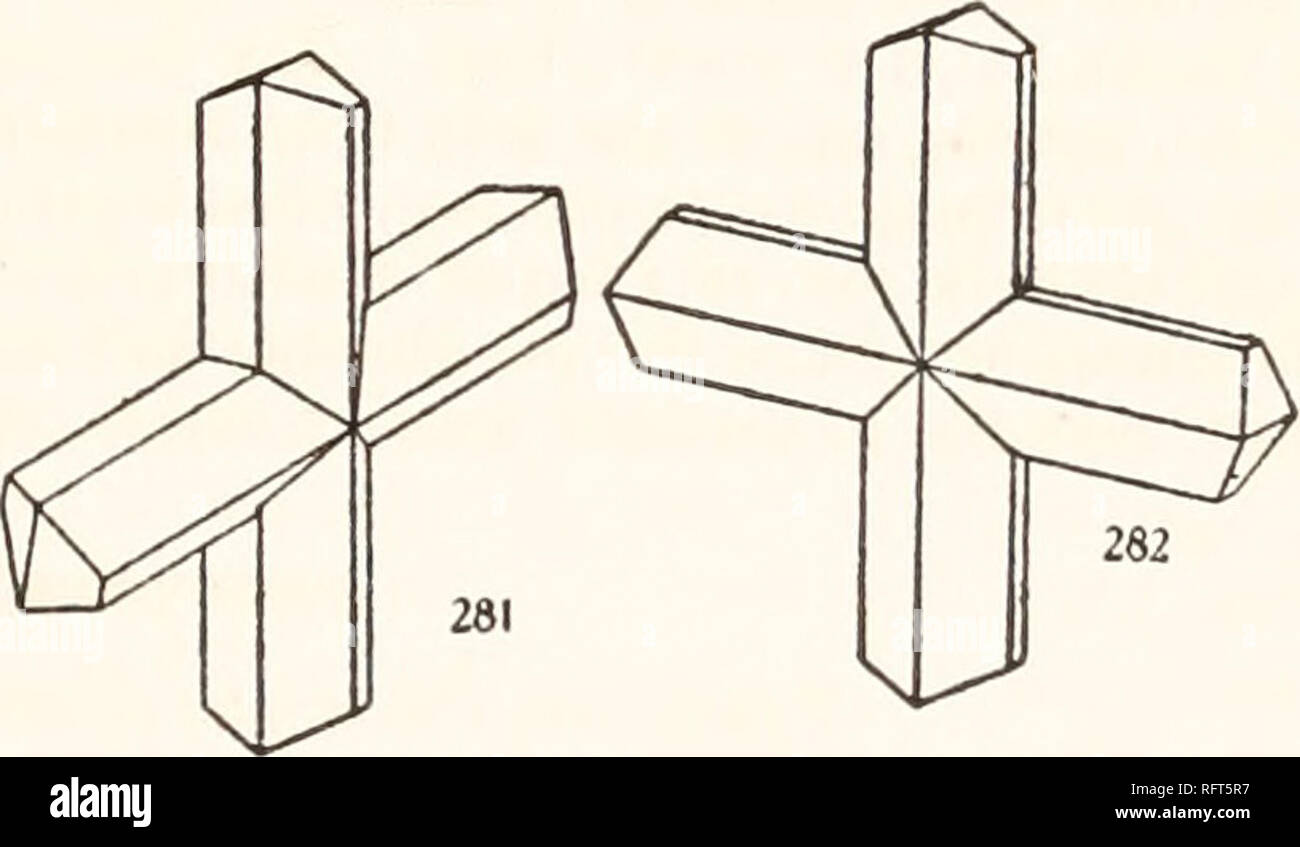. Carnegie Institution of Washington publication. OTARinXE, PHOCID.E, MUSTELID^E, PROCYONID.E, AND URSID^. 257 Oxy'hemoglobin of Cercoleptes caudivolvulus. Orthorhombic: Axial ratio, a : b : 6 =0.6556 : 1 : 0.4663. Forms observed: Unit prism (110), brachydome (Oil), brachypinacoid (010), base (001), macropinacoid (100). Angles: Prism angle 110 A 1TO=66° 30'; brachydome angle 01lAOTl=50°; brachypinacoid to brachydome 010 A 011=65°; base to macropinacoid 001 A 100=90°. The crystals occur in two habits: (a) prismatic along the vertical axis, the crystal consisting of the unit prism (110), brachyd

Image details
Contributor:
Book Worm / Alamy Stock PhotoImage ID:
RFT5R7File size:
7.2 MB (150.4 KB Compressed download)Releases:
Model - no | Property - noDo I need a release?Dimensions:
2072 x 1207 px | 35.1 x 20.4 cm | 13.8 x 8 inches | 150dpiMore information:
This image is a public domain image, which means either that copyright has expired in the image or the copyright holder has waived their copyright. Alamy charges you a fee for access to the high resolution copy of the image.
This image could have imperfections as it’s either historical or reportage.
. Carnegie Institution of Washington publication. OTARinXE, PHOCID.E, MUSTELID^E, PROCYONID.E, AND URSID^. 257 Oxy'hemoglobin of Cercoleptes caudivolvulus. Orthorhombic: Axial ratio, a : b : 6 =0.6556 : 1 : 0.4663. Forms observed: Unit prism (110), brachydome (Oil), brachypinacoid (010), base (001), macropinacoid (100). Angles: Prism angle 110 A 1TO=66° 30'; brachydome angle 01lAOTl=50°; brachypinacoid to brachydome 010 A 011=65°; base to macropinacoid 001 A 100=90°. The crystals occur in two habits: (a) prismatic along the vertical axis, the crystal consisting of the unit prism (110), brachydome (Oil), and brachypinacoid (010) (text figure 278); (b) tabular on the brachypinacoid, the crystals apparently consisting of the three pinacoids (100, 010, and 001) (text figure 279). Type (a) is the common crystal, and the crystals of the type (b) only appeared sparingly in the slides. The type (a) crystal is usually quite symmetrically developed, the planes (110) and (Oil) being large, but the plane (010) generally small. The dome termination is liable to develop with two faces, usually on the same side (as Oil and Oil), larger than the opposite pair; some- times the larger pair are diagonally opposite each other. This unsymmetrical develop- ment occasionally goes so far as practically to suppress two of the dome faces, when the crystal has a monoclinic appearance. The ratio of length to thickness of the prism, comparing the length to the longer diagonal of the prism section, is usually about 5 : 1 and runs down to 2 : 1 or less. Definite twinning was not observed, and the crystals occur singly or simply massed together in irregular order. These type (a) crystals are very smooth and perfect and show no striation. The type (b) crystals appeared sparingly in the slides and were either nearly square plates or long lath-shaped crystals. The latter form aggregated in bundles or groups with parallel orientation, but not so regular as parallel growths; the square habit piled